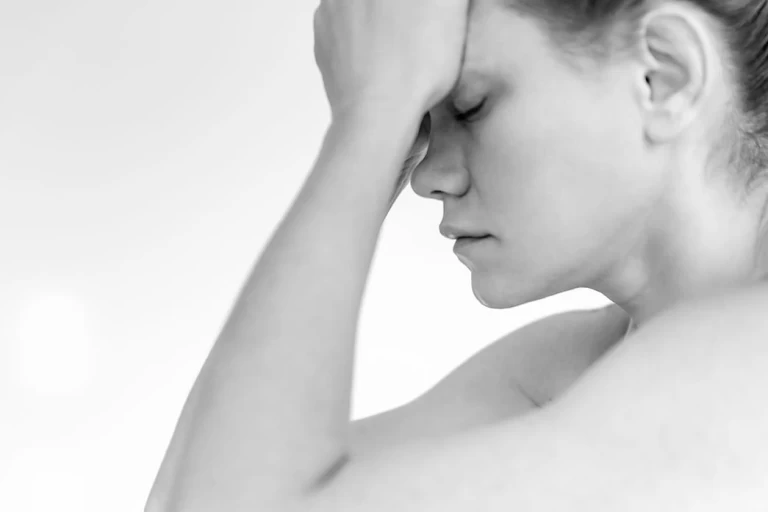
Meniere’s disease is a chronic and often debilitating condition of the inner ear, marked by episodes of severe dizziness (vertigo), fluctuating hearing loss, tinnitus (ringing in the ears), and a sensation of fullness or pressure in the affected ear.
These symptoms can disrupt daily life, leaving individuals struggling with unpredictable attacks that range from mild to incapacitating. While the exact cause of Meniere’s disease remains elusive, emerging research and clinical observations point to a significant contributing factor: misalignments in the upper cervical spine.
These misalignments, particularly involving the atlas (C1) and axis (C2) vertebrae, can irritate nerves, restrict blood flow, and disrupt inner ear function, creating a ripple effect that exacerbates Meniere’s symptoms and contributes to other systemic conditions such as chronic fatigue and shoulder impingement.
The Upper Cervical Spine and Meniere’s Disease
The upper cervical spine, comprising the atlas and axis, plays a critical role in maintaining neurological and vascular integrity. The atlas, the topmost vertebra, supports the skull and facilitates head movement, while the axis allows for rotation.
These vertebrae are uniquely positioned near the brainstem, a vital control center for balance, hearing, and autonomic functions. Misalignments in this region—often caused by trauma, poor posture, or repetitive stress—can have far-reaching consequences.
One of the primary mechanisms linking upper cervical misalignments to Meniere’s disease is nerve irritation. The brainstem and cranial nerves, particularly the vestibulocochlear nerve (cranial nerve VIII), regulate inner ear function, including balance and hearing.
When the atlas or axis shifts out of alignment, it can compress or irritate these neural structures, disrupting their ability to transmit signals effectively. This interference may alter the fluid dynamics within the inner ear, leading to endolymphatic hydrops, a condition associated with
Meniere’s disease where excess fluid accumulates in the labyrinth, causing pressure, dizziness, and auditory disturbances.
Additionally, misalignments can impair blood flow to the inner ear. The vertebral arteries, which pass through the cervical spine, supply blood to the brainstem and inner ear structures.
Forward head posture, a common consequence of modern lifestyles involving prolonged sitting or device use, can compress these vessels, reducing circulation. Poor blood flow may starve the inner ear of oxygen and nutrients, exacerbating symptoms like tinnitus, vertigo, and ear fullness.
For example, a forward tilt of the head by just a few centimeters increases pressure on the cervical spine, potentially compromising vascular and neural pathways.
Poor posture also affects the musculoskeletal system, further contributing to Meniere’s symptoms. Habitual slouching or improper head positioning can strain the neck, misaligning the atlas and axis.
This misalignment may disrupt the body’s proprioceptive feedback, the sensory system that informs the brain about spatial orientation and balance. When proprioception is impaired, the brain struggles to coordinate balance, intensifying vertigo during Meniere’s attacks.
Upper Cervical Chiropractic Care: A Targeted Solution
Upper cervical chiropractic care focuses on correcting misalignments in the atlas and axis with precision and minimal force. Unlike general chiropractic adjustments, upper cervical techniques use detailed imaging, such as X-rays or cone-beam CT, to assess the exact degree of misalignment.
Adjustments are gentle, specific, and tailored to the individual’s anatomy, ensuring optimal outcomes with minimal discomfort.By restoring proper alignment, upper cervical care addresses the root causes of Meniere’s symptoms.
First, it relieves nerve irritation. Correcting atlas and axis positioning reduces pressure on the brainstem and cranial nerves, allowing them to function optimally. This can stabilize inner ear fluid dynamics, decreasing the frequency and severity of vertigo episodes.
Patients often report a reduction in tinnitus and ear fullness as nerve pathways regain normal signaling.
Second, upper cervical adjustments improve blood flow. Realigning the cervical spine alleviates compression on the vertebral arteries, enhancing circulation to the inner ear and brainstem. Improved blood supply supports tissue health and reduces ischemic stress, which may otherwise trigger or worsen Meniere’s attacks.
Enhanced circulation also promotes the delivery of oxygen and nutrients, aiding in the recovery of damaged inner ear structures.
Third, upper cervical care enhances brainstem function. The brainstem serves as a relay station for sensory and motor signals, including those related to balance and hearing. Misalignments can disrupt this communication, leading to symptoms like dizziness and disorientation.
By correcting spinal alignment, upper cervical chiropractic care optimizes brainstem activity, improving the body’s ability to maintain equilibrium and process auditory signals.
Clinical evidence supports the efficacy of upper cervical care for Meniere’s disease. Studies and case reports indicate that patients who receive consistent adjustments experience fewer vertigo episodes, improved hearing, and reduced tinnitus.
Beyond Meniere’s: Systemic Benefits of Upper Cervical Care
The benefits of upper cervical chiropractic care extend beyond Meniere’s disease, addressing systemic conditions influenced by cervical misalignments. Two notable examples are chronic fatigue and shoulder impingement, both of which can be linked to nerve compression and biomechanical dysfunction in the upper cervical spine.
Chronic Fatigue: Persistent tiredness is often tied to autonomic nervous system (ANS) dysfunction. The ANS regulates involuntary processes like heart rate, digestion, and energy metabolism. Misalignments in the atlas or axis can irritate nerves that connect to the brainstem, disrupting ANS balance. This may lead to symptoms like fatigue, brain fog, or difficulty recovering from physical or mental exertion.
Upper cervical adjustments restore nerve function, promoting ANS harmony and boosting energy levels. Patients frequently report improved vitality and mental clarity after treatment, suggesting a broader impact on systemic health.
Shoulder Impingement: Misaligned C1 and C2 vertebrae can alter shoulder mechanics by affecting nerve signals to the upper extremities. The brachial plexus, a network of nerves originating in the cervical spine, innervates the shoulder and arm. Compression or irritation in this region can cause pain, restricted movement, or weakness, mimicking or contributing to shoulder impingement.
Additionally, cervical misalignments may lead to compensatory postures that strain the shoulder joint. Upper cervical care corrects these issues by realigning the spine, reducing nerve interference, and restoring proper biomechanics. Patients often experience relief from shoulder pain and improved range of motion following adjustments.
Upper cervical chiropractic care offers a holistic, non-invasive approach to addressing these issues. By focusing on the root cause—spinal misalignment—it provides targeted relief without relying on medications or invasive procedures.
For individuals with Meniere’s disease, this care can mean fewer vertigo attacks, clearer hearing, and a better quality of life. For those with systemic conditions, it offers a pathway to improved energy, mobility, and overall well-being.







Leave a comment